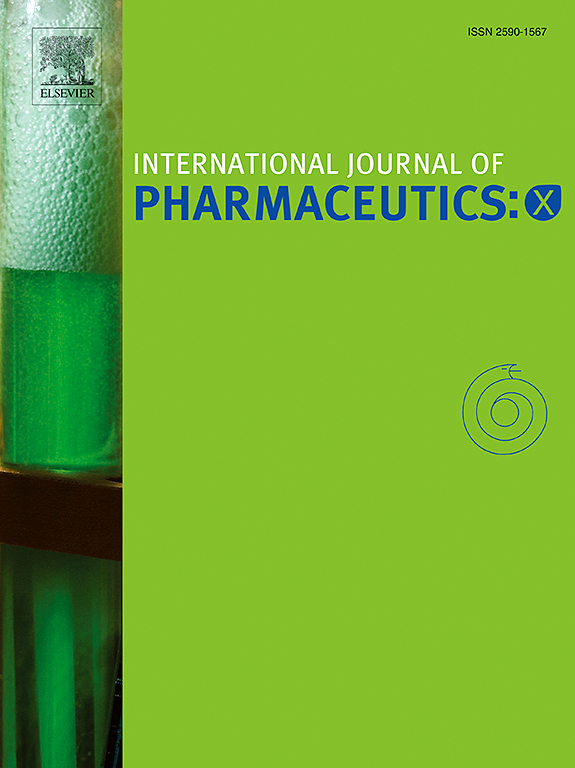Biodegradable copper-doped calcium phosphate nanoplatform enables tumor microenvironment modulations for amplified ferroptosis in cervical carcinoma treatment
IF 6.4
2区 医学
Q1 PHARMACOLOGY & PHARMACY
引用次数: 0
Abstract
As a recently discovered form of regulated cell death, ferroptosis has attracted much attention in the field cancer therapy. However, achieving considerably enhanced efficacy is often restricted by the overexpression of endogenous glutathione (GSH) in tumor microenvironment (TME). In this work, we report a ferroptosis-inducing strategy of GSH depletion and reactive oxygen species (ROS) generation based on a biodegradable copper-doped calcium phosphate (CaP) with L-buthionine sulfoximine (BSO) loading (denoted as BSO@CuCaP-LOD, BCCL). BCCL was conducted by a biomineralization approach using lactate oxidases (LOD) as a bio-template to obtain Cu-doped CaP nanoparticles. Then, BSO was loaded to form BCCL nanoparticles with pH-responsive biodegradability to endow controlled release of Cu2+ and BSO in response to acidic TME. Benefiting from the catalytic performance of LOD, BCCL efficiently depletes the level of lactate in tumor, which can generate endogenous H2O2 for subsequent Fenton-like reaction. The Cu2+ and BSO intracellular GSH depletion followed by GSH-mediated Cu2+/Cu+ conversion, leading to the inhibition of glutathione peroxidase 4 (GPX4) and generation of •OH radicals via Cu+-mediated Fenton-like reaction. BCCL confers enhanced ferroptosis induction via intracellular LOD-induced H2O2 production, BSO-mediated GSH depletion, and Cu+-mediated ROS generation, leading to cause effective ferroptotic cell damage. As verified by in vitro and in vivo assays, the designed BCCL nanoplatform is highly biocompatible and exhibits superior anticancer therapy on uterine cervical carcinoma U14 tumor xenografts. This study, therefore, provides a biocompatible therapeutic platform that modulating the TME to enable intensive ROS generating efficacy and GSH depleting performance, as well as provides an innovative paradigm for achieving effective ferroptosis-based cancer therapy.

可生物降解的铜掺杂磷酸钙纳米平台使肿瘤微环境调节放大铁下垂在宫颈癌治疗。
作为一种新近发现的细胞死亡调控形式,铁下垂在肿瘤治疗领域引起了广泛的关注。然而,获得显著增强的疗效往往受到肿瘤微环境(TME)中内源性谷胱甘肽(GSH)过表达的限制。在这项工作中,我们报道了一种诱导GSH消耗和活性氧(ROS)生成的铁中毒策略,该策略基于可生物降解的掺杂铜的磷酸钙(CaP)和l -丁硫氨酸亚砜(BSO)负载(标记为BSO@CuCaP-LOD, BCCL)。BCCL采用生物矿化方法,以乳酸氧化酶(LOD)为生物模板,获得cu掺杂的CaP纳米颗粒。然后,负载BSO形成具有ph响应生物降解性的BCCL纳米颗粒,使cu +和BSO在酸性TME下可控释放。得益于LOD的催化作用,BCCL可以有效地消耗肿瘤中乳酸的水平,从而产生内源性H2O2,用于后续的fenton样反应。细胞内GSH消耗Cu2+和BSO,随后GSH介导Cu2+/Cu+转换,导致谷胱甘肽过氧化物酶4 (GPX4)抑制,并通过Cu+介导的芬顿样反应产生•OH自由基。BCCL通过细胞内lod诱导的H2O2生成、bso介导的GSH消耗和Cu+介导的ROS生成增强了铁细胞凋亡的诱导,导致有效的铁细胞凋亡损伤。体外和体内实验证实,所设计的BCCL纳米平台具有高度的生物相容性,对宫颈癌U14肿瘤异种移植具有良好的抗癌效果。因此,本研究提供了一个生物相容的治疗平台,通过调节TME来提高ROS生成效率和GSH消耗性能,并为实现基于铁中毒的有效癌症治疗提供了一个创新的范例。
本文章由计算机程序翻译,如有差异,请以英文原文为准。
求助全文
约1分钟内获得全文
求助全文
来源期刊

International Journal of Pharmaceutics: X
Pharmacology, Toxicology and Pharmaceutics-Pharmaceutical Science
CiteScore
6.60
自引率
0.00%
发文量
32
审稿时长
24 days
期刊介绍:
International Journal of Pharmaceutics: X offers authors with high-quality research who want to publish in a gold open access journal the opportunity to make their work immediately, permanently, and freely accessible.
International Journal of Pharmaceutics: X authors will pay an article publishing charge (APC), have a choice of license options, and retain copyright. Please check the APC here. The journal is indexed in SCOPUS, PUBMED, PMC and DOAJ.
The International Journal of Pharmaceutics is the second most cited journal in the "Pharmacy & Pharmacology" category out of 358 journals, being the true home for pharmaceutical scientists concerned with the physical, chemical and biological properties of devices and delivery systems for drugs, vaccines and biologicals, including their design, manufacture and evaluation. This includes evaluation of the properties of drugs, excipients such as surfactants and polymers and novel materials. The journal has special sections on pharmaceutical nanotechnology and personalized medicines, and publishes research papers, reviews, commentaries and letters to the editor as well as special issues.
 求助内容:
求助内容: 应助结果提醒方式:
应助结果提醒方式:


